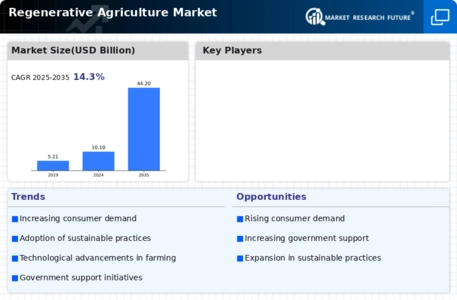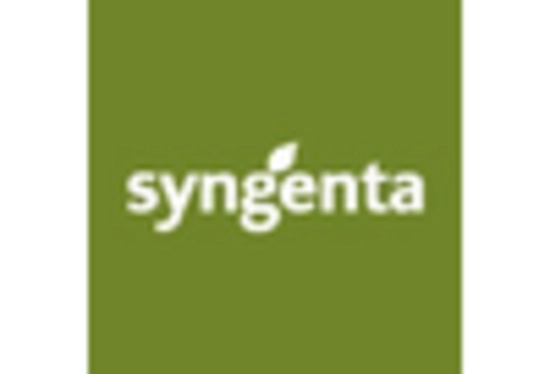Government Incentives and Support
Government policies and incentives play a crucial role in shaping the Regenerative Agriculture Market. Various countries are introducing subsidies and grants to encourage farmers to transition to regenerative practices. For instance, financial support for cover cropping and reduced tillage has been reported to increase adoption rates by up to 25%. These initiatives not only alleviate the financial burden on farmers but also align agricultural practices with environmental goals. As governments recognize the long-term benefits of regenerative agriculture, the support provided is likely to catalyze further growth in the market.
Increased Awareness of Soil Health
The Regenerative Agriculture Market is experiencing a notable shift towards prioritizing soil health. This awareness is driven by the recognition that healthy soil is fundamental to sustainable farming practices. As farmers increasingly understand the role of soil in carbon sequestration and biodiversity, they are adopting regenerative practices that enhance soil quality. According to recent data, approximately 30% of farmers are now implementing soil health initiatives, which is expected to rise as educational programs proliferate. This trend not only improves crop yields but also contributes to climate resilience, making it a pivotal driver in the Regenerative Agriculture Market.
Climate Change Awareness and Adaptation
The growing awareness of climate change and its impacts is driving the Regenerative Agriculture Market. Farmers are increasingly recognizing the need to adapt their practices to mitigate climate-related risks. Regenerative agriculture offers a viable solution by promoting practices that enhance resilience against extreme weather events. Data suggests that farms employing regenerative techniques can reduce their vulnerability to climate fluctuations by improving soil structure and water retention. As climate change becomes a more pressing issue, the adoption of regenerative practices is expected to accelerate, positioning the market for substantial growth.
Technological Advancements in Agriculture
Technological advancements are revolutionizing the Regenerative Agriculture Market by providing innovative solutions that enhance farming practices. Precision agriculture technologies, such as soil sensors and drones, enable farmers to monitor and manage their land more effectively. These tools facilitate the implementation of regenerative practices by providing data-driven insights that optimize resource use. The integration of technology is projected to increase efficiency and productivity, making regenerative methods more appealing to farmers. As technology continues to evolve, its role in supporting regenerative agriculture is likely to expand, contributing to the market's growth.
Rising Consumer Preferences for Organic Products
Consumer preferences are increasingly shifting towards organic and sustainably produced food, significantly impacting the Regenerative Agriculture Market. Research indicates that the organic food market has been growing at a compound annual growth rate of over 10%, reflecting a strong demand for products that are produced using regenerative methods. This trend is prompting farmers to adopt regenerative practices to meet consumer expectations. As consumers become more educated about the environmental impacts of their food choices, the demand for products derived from regenerative agriculture is expected to continue to rise, further driving market growth.


















Leave a Comment